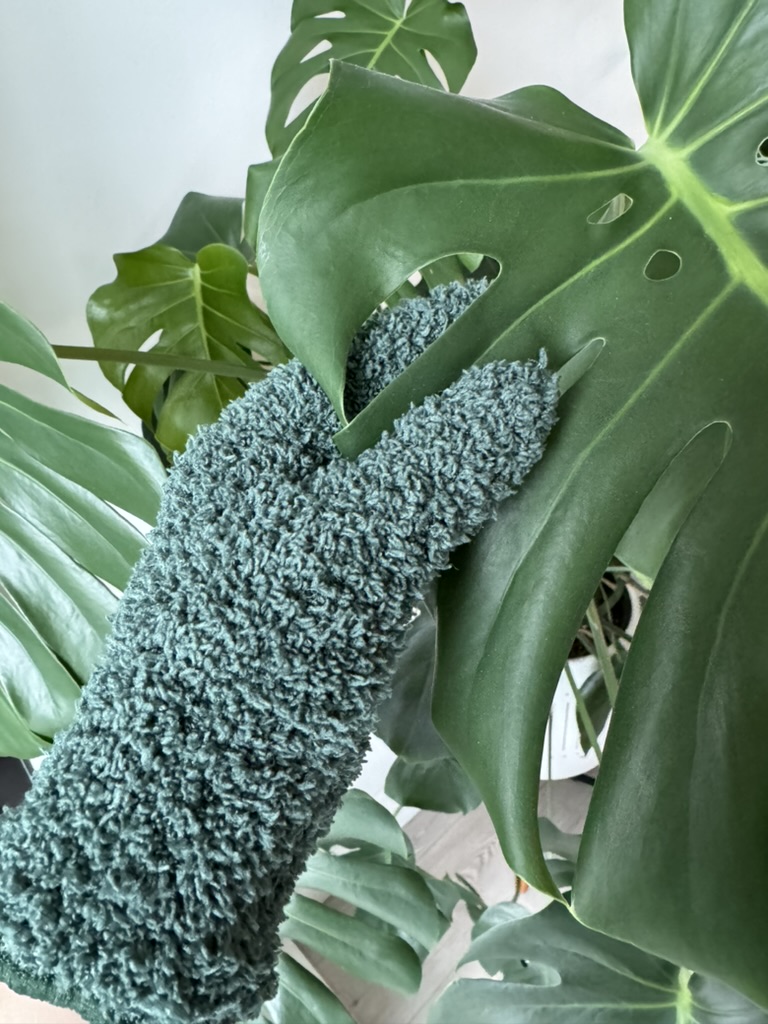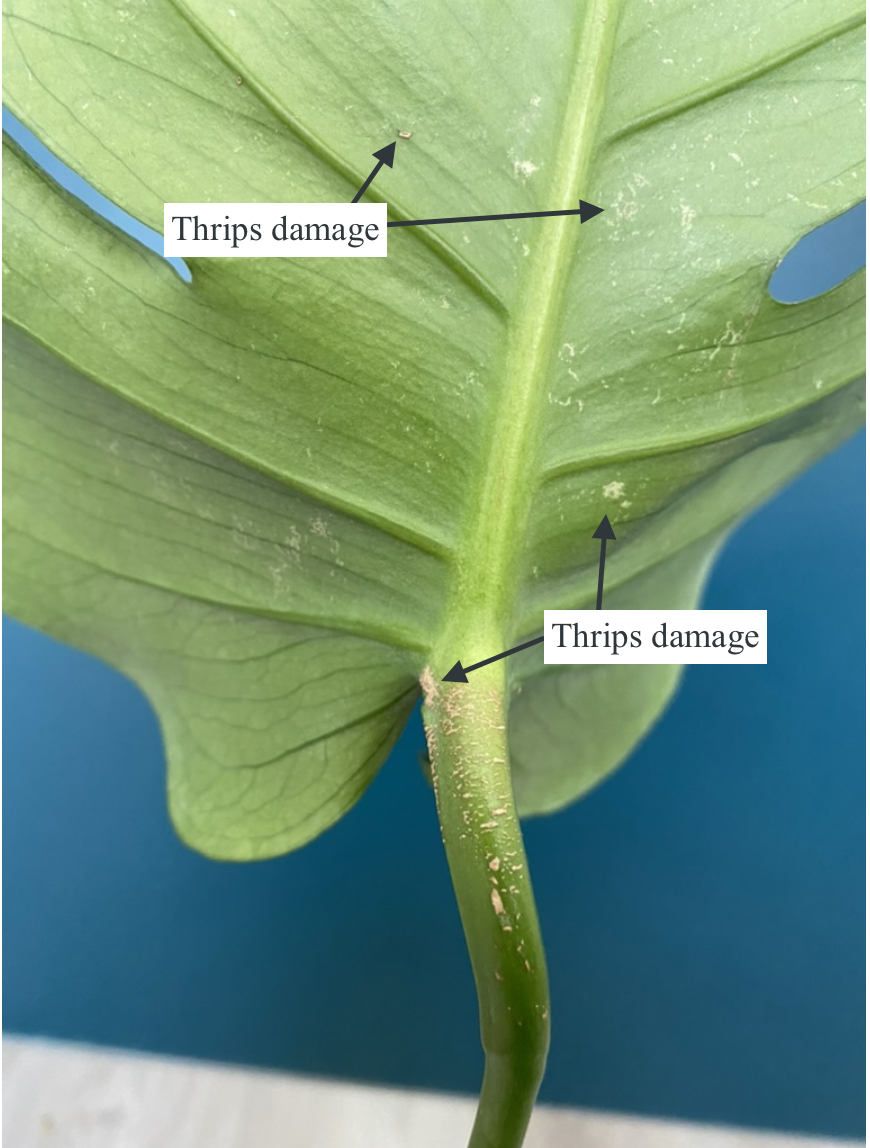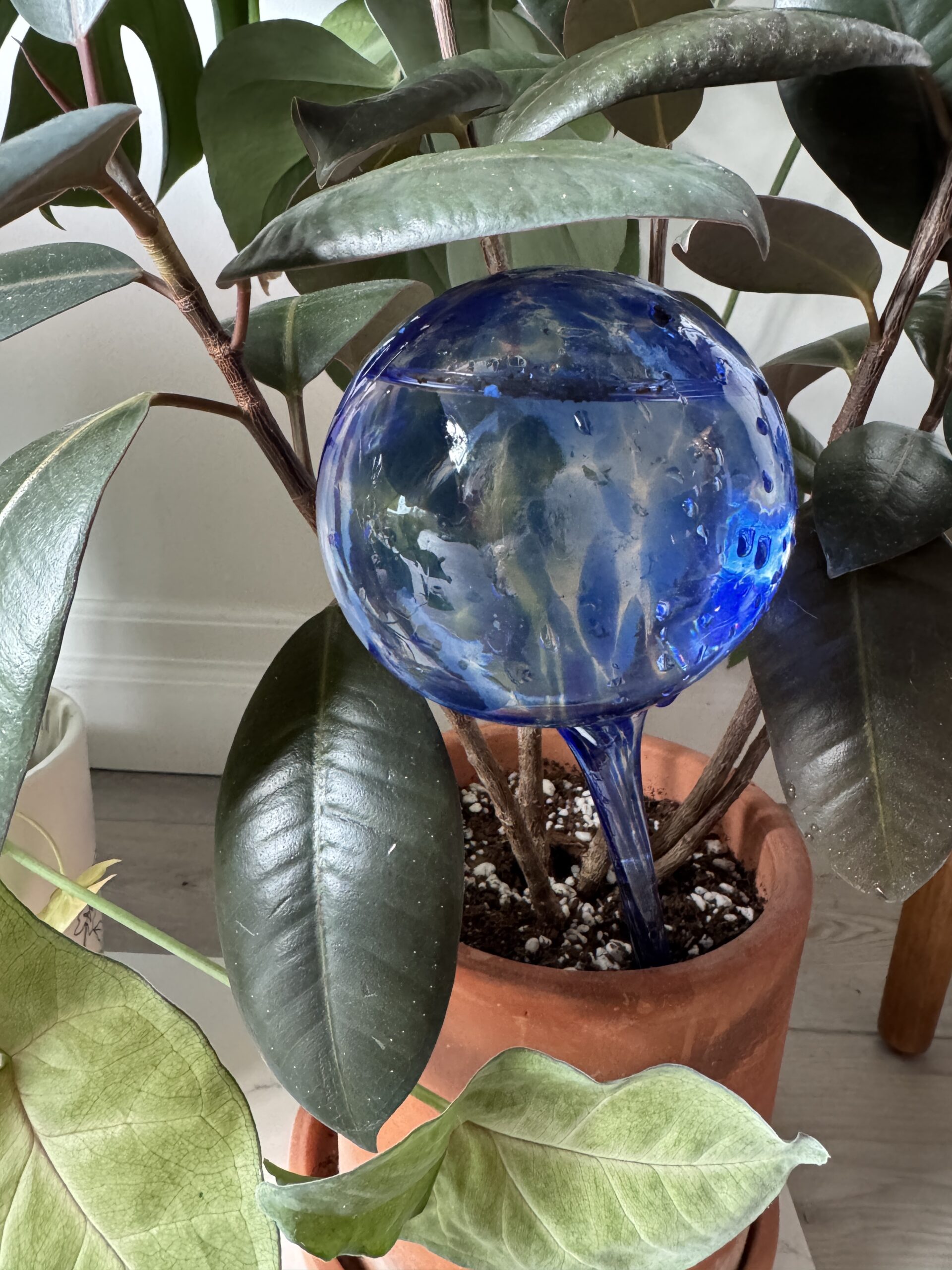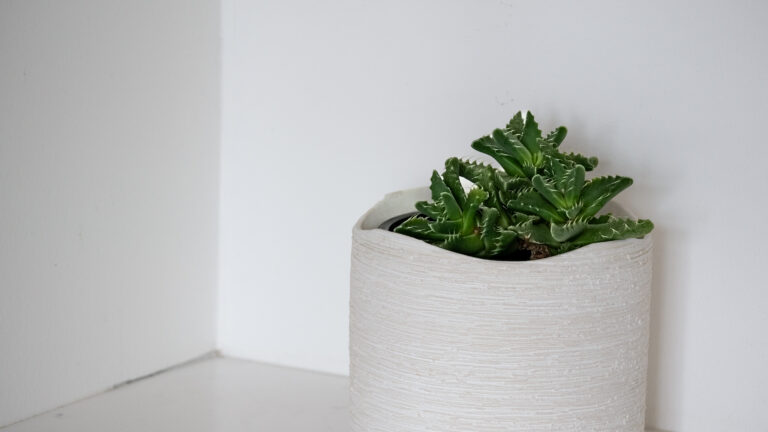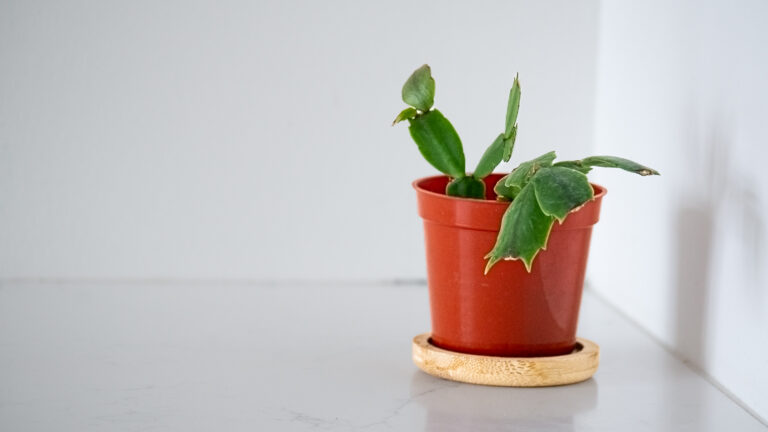Welcome to this beginner friendly snake plant care guide!
The Snake Plant or Dracaena trifasciata ‘Zeylanica’ is a member of the asparagaceae family. It is native to West Africa.
Dracaena trifasciata ‘Zeylanica’ is referred to as the Snake Plant because of its foliage resemblance to snakes. Up until 2017, the snake plant was classified as a Sansevieria.
There are around 2900 species of the asparagaceae family.
Snake Plant Appearance
The Snake Plant has long, green triangular leaves. There are many varieties of snake plants.
The Zeylanica for instance has squiggly dark green variegation on lighter green leaves.
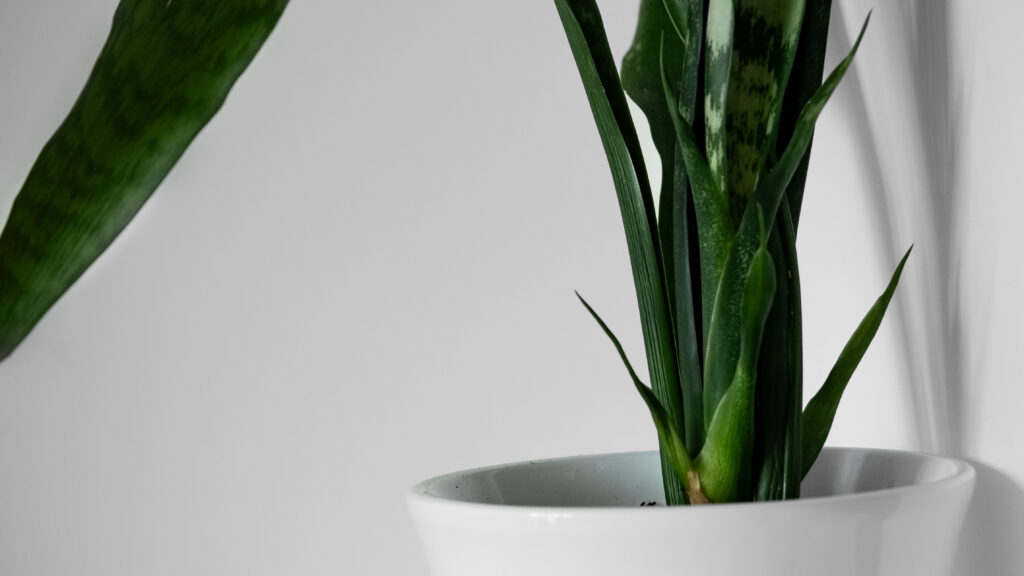
Light Needs for Snake Plants
Dracaena trifasciata thrives in indirect, brighter light, however they are low light tolerant. You can basically put these plants anywhere in your house that it can see natural sunlight, and they will be fine.
The more light the Snake Plant receives, the quicker it will grow.

Ideal Temperature and Humidity for Snake Plants
Snake Plant prefers a temperature between 16-24 degrees celsius.
They also prefer lower humidity, but do well in average household humidity levels (40-60%). I keep my Dracaena trifasciata in a room with a Levoit Humidifier.
I use my humidifier to ensure the humidity levels in my apartment stays above 40%. Since I live in Canada, the winters can be very dry, and the humidity can drop below 30% humidity, so its helpful to set the humidity at about 45% or 50% in this season.
Growth Rate and Size of Snake Plants
On average, Dracaena trifasciata can grow up to 2-3 feet. In optimal conditions, this plant can grow up to 6 feet.
New foliage grows from the center of the existing bundle. Trifasciata refers to three bundles (which is how this type of Snake Plant grows).
When mature and thriving, offshoots will emerge from below the soil. These can be removed from the mother plant and propagated.
How to Repot a Snake Plant
Watch the video below on how to repot Snake Plants.
- Remove the plant from pot
- Detangle roots
- Add well draining soil (something with lots of perlite) to pot
- Add Snake Plant to the pot of soil and secure the plant
- Water the plant and place it in a well lit spot
For everything you need for repotting, check-out my guide on repotting essentials to make your life easier during the repot phase.
Snake Plant Blooming Habits
Dracaena trifasciata can bloom in their native environment. However, it is rare to see a this plant bloom indoors.
While Dracaena trifasciata are primarily grown for their striking foliage, they can occasionally bloom-though this is rare indoors. When conditions are right, mature, slightly root-bound plants may send up a tall flower stalk bearing clusters of small, white, tubular flowers. These blooms are often fragrant and may appear in late winter or spring.
Propagating Snake Plants: Division, Water, and Soil Methods
The easiest way to start a new Snake Plant is by offshoots/division. You can view this process in the video below.
Offshoots/Division
Look around the base of the Snake Plant for offshoots. Make sure the offshoots are at least 2 to 3 inches tall before separating them from the mother plant. Gently remove them from the parent plant by separating them at the base.
You will have to cut the offshoot off from the parent plant with shears and detangle the roots with your hands. Pot the offshoots into well-draining soil.
Make sure you water the newly divided plants, and place them in a relatively bright location with indirect light. You can see how I divided my offshoots in my Snake Plant repot video.
Cuttings with Water Propagation
Separate a leaf from the healthy, mature plant using shears. You can place the cutting directly into water, in a well lit place or you can notch the bottom of the leaf using your shears. To notch the leaf, cut a pattern that looks like a roof (two lines on an angle that meet at the top).
After notching the plant you would place this in a jar of water in a well lit place. Just the cut end needs to be submerged into water. If the water starts to get murky, you will want to change out the water, and put the plant back in. Otherwise it will potentially rot the stem and the plant won’t root.
I like water propagation because I can see when the roots start to form in a clear glass container. When the roots are stable enough, I then pot the plant in soil.
Cuttings with Soil propagation
Take a leaf from a healthy, mature plant. Notch the leaf into the triangular roof shape mentioned above, and place the cutting directly into moist (not wet) soil. Water every few weeks (like you would with a rooted Snake Plant). If your cutting turns yellow, it did not successfully root.
Patience is key with propagation. Give your new plant time to settle into its environment. Once you see new growth, you know your plant is well established.
Watering Snake Plants: How and When
The Snake Plant likes to dry out between waterings (likely 3-4 weeks). To determine if your Dracaena trifasciata needs water, you can stick your finger in the soil (1 to 2 inches) and if it is dry, its ready for water!
If you don’t want to get your hands dirty, you can use a moisture meter.
I used to bottom water this plant through the drainage hole of the pot on a tray, as it’s the easiest way to know if your plant is thirsty or not. Overwatering can lead to fungus gnats, root rot, or the death of your plant.
I now top water my Dracaena trifasciata, but it’s best to do so in a pot with drainage until water is flowing out of the hole. If your pot doesn’t have drainage, you might accidentally drown your plant.
You should top water from time to time to make sure any built up minerals can wash through the plant. The water should drip out of the bottom of your drainage hole.
Snake Plants are a great plant for travellers as you usually only need to water them once a month. If you are travelling for longer than a month, check-out my vacation plant care guide on setting up automated systems to keep your plant alive while travelling!
Common Pests and Problems in Snake Plants
Snake Plant can face the following pests and problems.
Dracaena trifasciata Pests
Fungus Gnats
Spray the plant with a mixture of neem oil, dish soap and water. I also let the soil dry out and add dryer sheets on top of the soil so the gnats can’t sense the moisture on the soil, and I insert a yellow sticky trap or two to prevent an infestation.
Aphids
Aphids are small, insects that cluster under leaves and stems of the Snake Plant. They can appear white, brown, black, gray, light green or yellow. If you see distortion, wilting or yellowing leaves, this can be a sign of aphids. You should be able to spray them off with a strong stream of water or using insecticidal soap.
Mealy Bugs
These look like little white cotton balls on the Snake Plant. You can remove these with your fingers if you catch them early enough, but I would use a cotton swab with a drop of Isopropyl alcohol and try to scrape them off the stem.
Spider Mites
If spider mites have taken to your Snake Plant, spray them with a mixture of neem oil, dish soap and water (or you can buy an insecticidal soap). I repeat this about once or twice a week (depending on the severity of infestation) for about a month. It’s also good to do this preventatively once a month or so. You will know you have spider mites if you see webbing and leaf damage. Learn how to eradicate Spider Mites.
Thrips
These are little, dark bugs that look like dirt on the Snake Plant. They suck the life out of the leaves, and lay eggs within the tissue of the leaf. As they age, they can grow wings and infect other plants. I spray the plant with a mixture of neem oil, dish soap and water. I repeat this every few days to try and get both the pest and the eggs. Sometimes I just chop the affected leaf since they are hard to eradicate. I also insert a yellow sticky trap into the soil to try and slow the infestation. Complete guide on how to get rid of thrips.
Common Problems for Snake Plants
- Overwatering (drooping or yellowing leaves, brown or mushy roots): Root rot happens from overwatering your plant with insufficient drainage. You can improve the drainage of your plant by ensuring your plant is potted in a planter with a drainage hole and using a well draining soil (something with a decent amount of perlite). If the root rot is really bad, you will have to repot your plant. Otherwise you can try to aerate the soil, add dryer sheets, and move it to a sunnier place in your house to dry out. You can also end up with fungus gnats or fungal disease from overwatering.
- Underwatering (wrinkled and dull-looking leaves): Even though Snake Plants prefer to be underwatered vs. overwatered, you still have to remember to water it on a consistent schedule. Signs of underwatering can include wrinkled, dull-looking leaves while the soil is dry.
- Too Much Sun (wrinkled and dull-looking leaves; brown spots): If your Snake Plant receives too much sun, its foliage will look faded or bleached. You can fix this by moving your plant to a less sunny location.
- Long, narrow leaves (not enough sunlight): If your Snake Plant has long, narrow leaves, it might not be receiving enough sun. Move your Snake Plant closer to a window.
Snake Plant Toxicity
Snake Plants are moderately toxic to humans and pets if ingested.
The leaves contain saponins, which can cause nausea, vomiting, and diarrhea in cats and dogs, and mild irritation in humans. Symptoms are usually mild and resolve on their own, but it’s best to keep Dracaena trifasciata out of reach of curious pets and children to avoid issues.
Snake Plant Quick Care Guide
| Scientific Name | Dracaena trifasciata ‘Zeylanica’ (formerly Sansevieria trifasciata ‘Zeylanica’) |
| Nickname | Snake Plant, Mother-In-Law’s Tongue |
| Origins | West Africa |
| Light | Indirect, low-light |
| Temperature | 16-24 degrees celsius (preferred) |
| Humidity | Low |
| Height | Up to 6 feet |
| Blooms | Yes, but rarely outside of its native environment |
| Propagate | Division, Offshoots, Cuttings |
| Water Frequency | When dry (likely once a month) |
| Pests | Fungus Gnats, Aphids, Mealy Bugs, Spider Mites, Thrips |
| Common Problems | Overwatering (root rot), drooping leaves, yellow leaves, underwatering, faded leaves, wrinkled leaves, brown spots |
| Toxicity | Moderate (not safe when ingested) |
References
Below is a list of external sources I consulted while writing this post. This post is a mixture of my own experiences, and the external sources listed below:
Jomo Studio – Sansevieria Zeylanica
Wikipedia – Dracaena Trifasciata & Asparagaceae
The Sill – Snake Plant
The Spruce – Propagate Snake Plant
Plant Addicts – Snake Plant Problems

